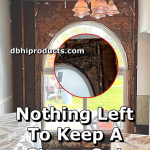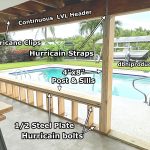Retirement Planning, Staying In Your Home?
Retirement-Ready Home Improvements
Planning for a Comfortable and Secure Future
Retirement planning can be simple. You can find a financial planner who makes sense to you—they’ll give you a formula based on stock market history and expected returns. Most planners use similar tools and projections because they all draw from the same set of investment options.
What varies is the level of personal involvement you want. Some people prefer a hands-on approach, while others choose professional management. Regardless, one timeless piece of advice applies to everyone:
“Don’t put all your eggs in one basket.”
Yet, the investment industry rarely asks an important question:
“How long do you want to live in your home?”
After a 30-year career in home improvement, I’ve talked with thousands of homeowners about their needs and plans. I’ve learned that certain home improvements should be done before retirement begins—especially if you plan to stay in your home long-term.
I wrote this because it breaks my heart to see retirees lose their homes simply because maintenance was deferred too long. In Florida, home ownership can be costly, and it’s worth comparing the cost of living near family outside the state before you retire.
Roof
In Florida, insurance companies are increasingly forcing homeowners to replace their roofs every 20 years—and sometimes even after just 15. That’s not too bad if you’re 80, but it can be a big problem if you’re 55.
A standing seam metal roof costs about one-third more than shingles but offers excellent storm resistance and can last 40–70 years. If you’re around 50 years old, there’s no reason to wait—this may be the last roof you’ll ever need.
Note: My company doesn’t do roofing, but it’s an important issue to plan for.
Wood Siding
I talk with older homeowners every week about wood rot and siding repairs. Many need to patch sections of T1-11 or cedar siding year after year. Unfortunately, the quality of modern wood siding isn’t what it used to be. Even with good primer and paint, we often see rot appear in as little as six years.
When full replacement isn’t affordable, we have to document each repair site carefully—often finding more damage than expected before the work even begins. Rot tends to spread quickly once it starts.
The Solution: James Hardie Siding
The best long-term solution is James Hardie fiber cement siding, made right here in the USA. Hardie siding has proven itself for decades with a 30-year, no-nonsense warranty—when installed properly.
We’ve been Certified Hardie Installers in Florida since 2006, and I can say with confidence that it’s one of the smartest investments for anyone planning to retire in their current home. If you’re 40 or older, Hardie siding can significantly reduce your maintenance costs well into retirement—and it offers excellent resale value if you ever decide to move.
The best part for me personally? I don’t have to get heartbreaking calls from retirees who can no longer afford to maintain their homes.
Final Thoughts
Depending on your financial situation and long-term goals, it might make sense to:
Renovate and stay put,
Remodel to sell, or
Downsize to a smaller, more manageable home.
Whatever you choose, plan ahead. Take care of the big, necessary home improvements before you retire—so you can enjoy your golden years without financial or housing stress.








